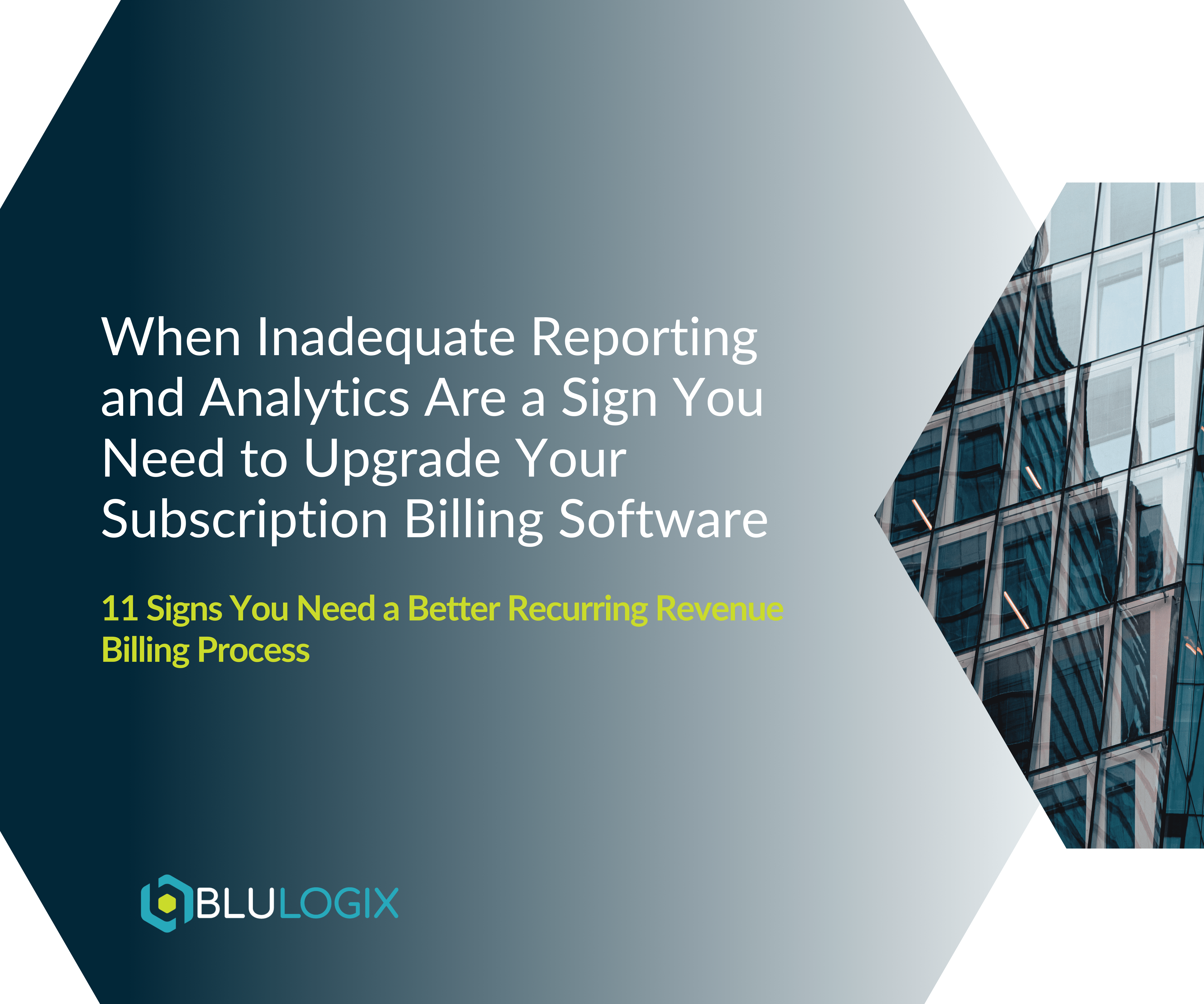Mastering the Art of Complex B2B Recurring and Subscription Billing: Aligning Financial Transactions with ERP Systems
In the world of subscription management, the seamless alignment of financial transactions from the billing system with Enterprise Resource Planning (ERP) systems is paramount. This integration is crucial for achieving accurate financial reporting, streamlining accounting processes, and providing a comprehensive view of the company’s financial health. This blog post covers the significance of automating the synchronization of financial transactions, including revenue, payments, and adjustments, with ERP systems and explores how this alignment can transform financial management within subscription-based businesses.
Take your business further with BluIQ’s flexible, scalable, enterprise-grade intelligent billing solutions.
The Importance of Integration
Financial transactions are the lifeblood of any business, providing vital information on revenue streams, cash flow, and profitability. In subscription models, where billing can be complex and multifaceted, ensuring that every financial transaction is accurately captured and reflected in the ERP system is essential for:
- Real-Time Financial Visibility: Immediate access to financial data allows for more informed decision-making and timely responses to financial trends.
- Accurate Financial Reporting: Integration ensures that financial reports generated from the ERP system accurately reflect all billing activities, crucial for internal analysis and regulatory compliance.
- Streamlined Accounting Processes: Automating the flow of financial data between systems reduces manual entry errors and operational inefficiencies, freeing up valuable resources for strategic activities.
Challenges of Financial Data Synchronization
- Complex Data Mapping: The intricacies of subscription billing often require complex data mapping to ensure that each financial transaction is categorized correctly within the ERP system.
- Volume of Transactions: Subscription models, particularly those based on usage or consumption, can generate a large volume of transactions, challenging the capacity of manual processes.
- Evolving Business Models: As subscription businesses evolve, so too do their billing models and financial structures, necessitating flexible integration solutions that can adapt to change.
Strategies for Effective Integration
- Selecting Compatible Systems: Choose a billing platform and ERP system that offer robust integration capabilities, ensuring that they can communicate seamlessly and share data in real-time.
- Automating Data Flows: Utilize integration tools or middleware that can automate the transfer and synchronization of financial data between the billing system and the ERP, ensuring accuracy and timeliness.
- Regular Reconciliation: Implement regular reconciliation processes to verify that the financial data in both systems matches, identifying and addressing any discrepancies promptly.
Leveraging Technology for Seamless Integration
Advancements in cloud-based technologies and APIs (Application Programming Interfaces) have made it easier than ever to achieve seamless integration between billing platforms and ERP systems. These technologies enable real-time data exchange and synchronization, ensuring that financial transactions are accurately reflected in both systems without the need for manual intervention.
The Benefits of Aligned Financial Transactions
Aligning financial transactions with ERP systems brings numerous benefits to subscription-based businesses, including:
- Enhanced Financial Control: Provides finance teams with a comprehensive and accurate view of financial performance, supporting better financial control and management.
- Improved Compliance: Ensures that financial reporting complies with accounting standards and regulatory requirements, reducing the risk of financial discrepancies.
- Operational Efficiency: Eliminates manual data entry and reduces the potential for errors, streamlining financial operations and allowing teams to focus on higher-value activities.
For subscription-based businesses, the alignment of financial transactions with ERP systems is not just an operational necessity but a strategic advantage. Automating this integration can significantly enhance financial visibility, accuracy, and efficiency, providing a solid foundation for strategic decision-making and growth. As the subscription economy continues to evolve, the ability to seamlessly sync financial transactions with ERP systems will remain a critical component of successful financial management.
Take your business further with BluIQ’s flexible, scalable, enterprise-grade intelligent billing solutions.
Learn more

How Revenue Leakage is a Sign Your Billing Processes Aren’t Scaling
Effective customer management is vital for retaining clients and maintaining high satisfaction levels in any subscription-based business model. However, many companies face challenges with

How to Pivot When Cumbersome Customer Management Derails Your Subscription Model
Effective customer management is vital for retaining clients and maintaining high satisfaction levels in any subscription-based business model. However, many companies face challenges with

When Inadequate Reporting and Analytics Are a Sign You Need to Upgrade Your Subscription Billing Software
In the complex landscape of B2B subscription billing, the ability to generate comprehensive and insightful reports is crucial. Businesses often struggle with outdated or

